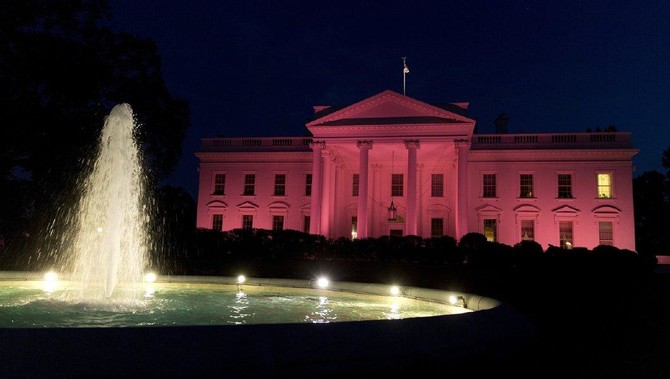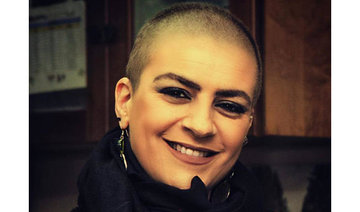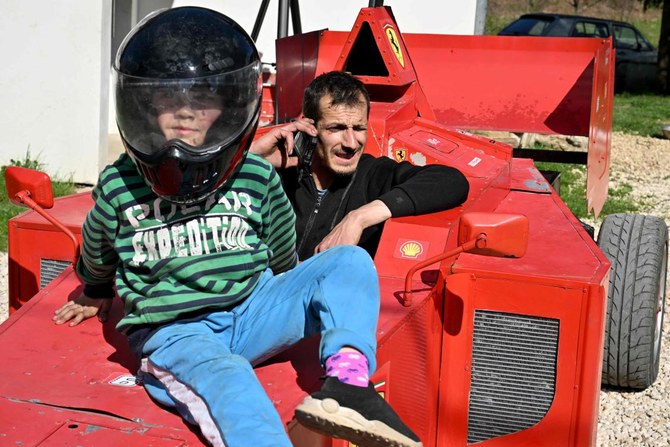LONDON: Pink October is underway as events organized by charities, brands and governments around the world mark breast cancer awareness month.
This global health movement has grown to become one of the most highly anticipated months in the annual events calendar around the world.
Fashion and lifestyle merchandise lead the pink trend and this year is no different.
With an emphasis on encouraging men and women to incorporate pink into their fashion choices, the campaign aims to raise awareness of early breast cancer detection as well as to fundraise for essential life-saving research into the disease.
US singer Alicia Keys and designer Stella McCartney are leading the pink fashion revolution this year. The two giants in the music and fashion industries have teamed up to launch a lingerie line — the limited edition Ophelia Whistling set in Japanese “Poppy Pink” lace. The funds from sales of the line will be divided between two charity initiatives important to the women who have both had family members affected by breast cancer.
For Alicia Keys, the focus is the Memorial Sloan Kettering Breast Examination Center of Harlem — the district in which she was born and raised in New York. For McCartney it is the Linda McCartney Center, which is part of Royal Liverpool University Hospital and was set up in her late mother’s name in 2000.
In a video, both the designer and musician talk about the disease and how they have both been affected by it.
Breast Cancer Awareness Month has grown since it was launched more than 25 years ago. Some of the events have provided a pink spotlight on the crucial cause.
The night sky has been turning pink as iconic landmarks around the world have been illuminated to generate awareness about breast cancer and the importance of early detection.
The White House in Washington has kept to its decade-old tradition and turned pink at the start of the month in a ceremony that was first initiated by President George W. Bush in 2008.
Tweeting from the house, Melania Trump said:
In honor of National Breast Cancer Awareness Month we lit the @WhiteHouse pink! pic.twitter.com/w3M3XlpXos
— Melania Trump (@FLOTUS) October 2, 2017
Meanwhile, in the English county of Herefordshire the Madley Earth Station is beaming out a pink ray of light to mark the month.
Another striking example is being showcased at the Pennsylvania state Capitol East Wing Fountain. The fountain is flowing pink-dyed water throughout the entire month of October to serve as a reminder to all women of the importance of mammograms and early detection.
This year’s breast cancer awareness month coincides with the 25th anniversary of the pink ribbon, a powerful symbol for millions of people affected by the disease and one that Arab News is championing on its print masthead throughout the month.
Breast cancer awareness month has been developed by major charities to raise awareness and funds for breast cancer education, research and prevention, along with support to those who suffer from the disease.
Breast Cancer Care was the first UK charity to adopt the pink ribbon, providing the country with a much-needed shortcut to talking about breast cancer and establishing it in the hearts and minds of the nation.
Talking to Arab News, Samia Al-Qadhi, chief executive of Breast Cancer Care, explains the significance of the campaign over the years.
“It sends a powerful message and is responsible for making millions of women more ‘breast aware’ and catapulting awareness of breast cancer into the mainstream.
“Today, more people than ever are surviving, but the reality is that every 10 minutes someone new is told they have breast cancer. There’s never been a greater need for our life-changing support both for today and tomorrow. We can help women and men feel more in control,” she added.
As breast cancer awareness month continues, expect to see a lot more of the color pink in the coming days. Creating awareness for women to be able to detect the signs and symptoms of breast cancer sooner can make all the difference in more effective treatment and, ultimately, save more lives.






























